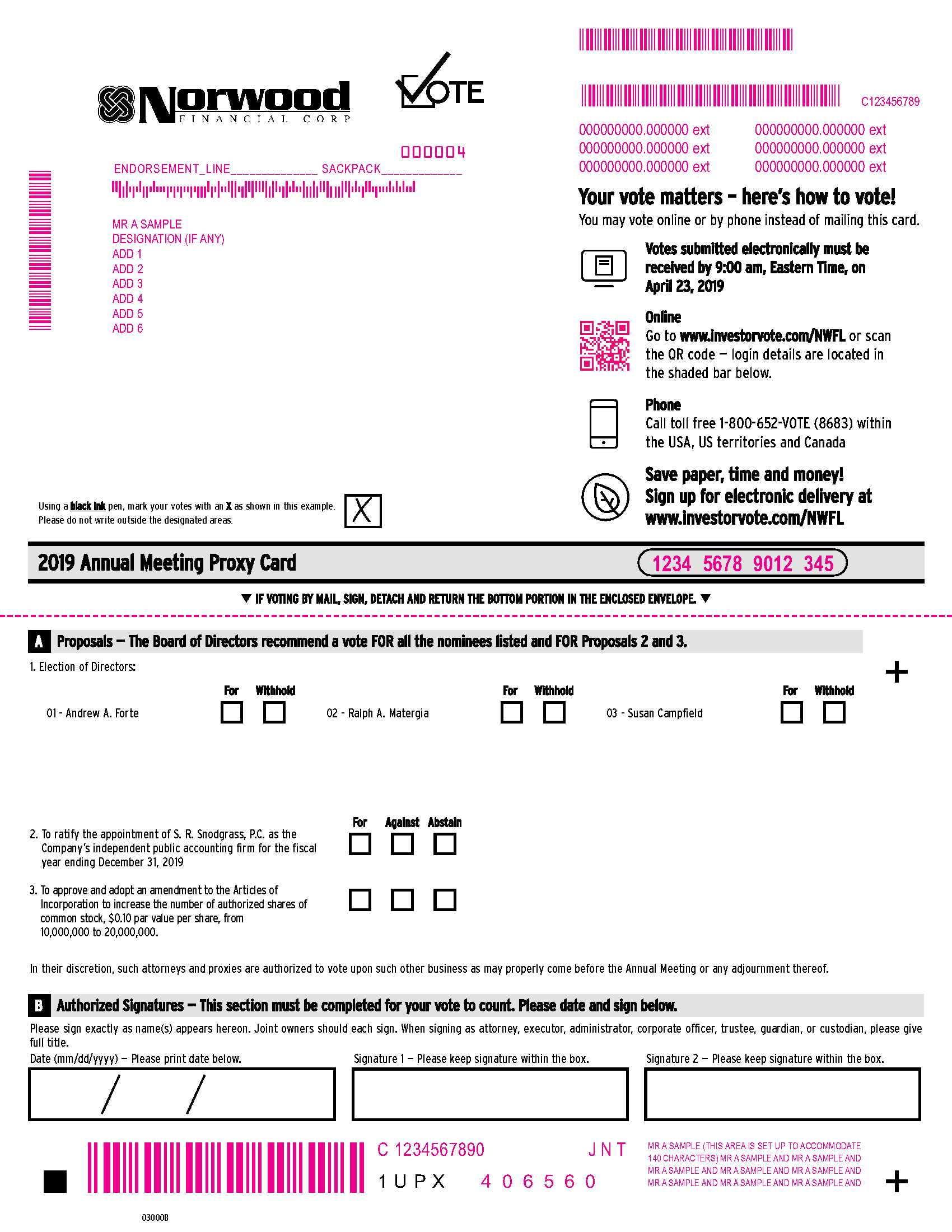During the year-ended December 31, 2018,2020, all audit and non-audit related services performed by the independent auditors were pre-approved by the Audit Committee. No services were approved pursuant to the de minimis exception of the Sarbanes-Oxley Act of 2002 and SEC regulations thereunder.
Ratification of the appointment of the independent auditors requires the affirmative vote of a majority of the votes cast at the Annual Meeting. The Board of Directors recommends that stockholders vote “FOR” the ratification of the appointment of S.R. Snodgrass, P.C. as the Company’s independent auditors for the 20192021 fiscal year.
REPORT OF THE AUDIT COMMITTEE
For the fiscal year ended December 31, 2018,2020, the Audit Committee: (i) reviewed and discussed the Company’s audited financial statements with management; (ii) discussed with the Company’s independent auditor, S.R. Snodgrass, P.C., all matters required to be discussed by the Statement on Auditing Standards No. 61, as amended (AICPA, Professional Standards, Vol 1. AU Section 380), as adopted by the Public Company Accounting Oversight Board in Rule 3200T, and (iii) received the written disclosures and the letter from S.R. Snodgrass, P.C. as required by applicable requirements of the Public Company Accounting Oversight Board regarding S.R. Snodgrass, P.C.’s communications with the Audit Committee concerning independence and has discussed with S.R. Snodgrass, P.C. their independence. Based on the foregoing review and discussions, the Audit Committee recommended to the Board of Directors that the audited financial statements be included in the Company’s Annual Report on Form 10-K for the fiscal year ended December 31, 2018.
| Audit Committee: | |
Audit Committee: |
|
Dr. Andrew A. Forte – Chairman | |
| Susan Campfield | |
| Dr. Kenneth A. Phillips | |
| Ralph A. Matergia | |
| Meg L. Hungerford | Jeffrey Gifford |
PROPOSAL III – APPROVAL OF AMENDMENT TOARTICLES OF INCORPORATION TO INCREASE THE AUTHORIZED NUMBER OF SHARES OF COMMON STOCK
The Board has approved and recommends to the Company’s stockholders for their adoption at the Annual Meeting an amendment to the Company’s articles of incorporation to increase the number of shares of Common Stock authorized for issuance thereunder from 10,000,000 shares to 20,000,000 shares.
As of the Record Date, there were 6,292,643 shares of Common Stock outstanding and an additional 217,635 shares reserved for issuance under the Company’s stock benefit plans. Currently, the Company’s articles of incorporation permits the issuance of up to 10,000,000 shares of Common Stock leaving only 3,489,722 shares available for issuance.
The proposed amendment would give the Company greater flexibility in its financial affairs by making additional shares of Common Stock available for issuance in such transactions as the Board considers appropriate, including public or private offerings, stock splits or dividends or in connection with mergers and acquisitions or otherwise. The Company's stockholders may or may not be given the
opportunity to vote on such a transaction, depending on the nature of the transaction, applicable law, the rules and policies of The Nasdaq Stock Market and the judgment of the Board regarding the submission of such transaction to a vote of the Company’s stockholders. Because stockholders do not have preemptive rights under the articles of incorporation, the interests of existing stockholders may (depending on the particular circumstances in which additional capital stock is issued) be diluted by any such issuance.
It is possible that additional shares of the Common Stock could be issued for the purpose of making an acquisition by an unwanted suitor of a controlling interest in the Company more difficult, time-consuming or costly or to otherwise discourage an attempt to acquire control of the Common Stock. Under such circumstances, the availability of authorized and unissued shares may make it more difficult for stockholders of the Company to obtain a premium for their shares. Such authorized and unissued shares could be used to create voting or other impediments or to frustrate a person or other entity seeking to obtain control of the Company by means of merger, tender offer, proxy contest or other means. For instance, such shares could be privately placed with purchasers who might cooperate with the Board in opposing an attempt by a third party to gain control of the Company by voting such shares against the transaction with the third party or could be used to dilute the stock ownership or voting rights of a person or entity seeking to obtain control of the Company. Although the Board does not currently anticipate issuing additional shares of Common Stock for purposes of preventing a takeover of the Company, the Board reserves its right (consistent with its fiduciary responsibilities) to issue shares for such purpose.
If the amendment is adopted, the first sentence of Article 5.A of the Articles of Incorporation would be amended to read as follows:
“The total number of shares of capital stock that the Company has authority to issue is 25,000,000 of which 5,000,000 shall be serial preferred stock, no par value (hereinafter, the “Preferred Stock”) and 20,000,000 shall be common stock, $0.10 par value per share (hereinafter, the “Common Stock”).”
Adoption of the proposed amendment requires the affirmative vote of a majority of the votes entitled to be cast at the Annual Meeting. As soon as practicable after such affirmative vote has been taken, the amendment will be filed with the Corporations Bureau of the Department of State of the Commonwealth of Pennsylvania and will thereupon become effective.
THE BOARD RECOMMENDS THAT STOCKHOLDERS VOTE “FOR” ADOPTION OF THE AMENDMENT TO THE ARTICLES OF INCORPORATION TO INCREASE THE AUTHORIZED NUMBER OF SHARES OF COMMON STOCK.
SECTION 16(a) BENEFICIAL OWNERSHIP REPORTING COMPLIANCE
Section 16(a) of the Securities Exchange Act of 1934 requires our directors and executive officers and beneficial owners of more than 10% of the Common Stock to file reports of ownership and changes in ownership of their equity securities of the Company with the SEC and to furnish us with copies of such reports. To the best of our knowledge, all of the filings by our directors and executive officers were made on a timely basis during the 2018 fiscal year.
In order to be considered for inclusion in the Company’s proxy statement for the annual meeting of stockholders to be held in 2020,2022, stockholder proposals must be submitted to the Secretary at the Company’s office, 717 Main Street, Honesdale, Pennsylvania 18431, on or before November 24, 2019.26, 2021. Under the Articles of Incorporation, in order to be considered for possible action by stockholders at the 20202022 annual meeting of stockholders, stockholder nominations for director and stockholder proposals not
included in the Company’s proxy statement must be submitted to the Secretary of the Company, at the address set forth above, no later than February 24, 2020.
The Board of Directors does not know of any other matters that are likely to be brought before the Annual Meeting. If any other matters, not now known, properly come before the Annual Meeting or any adjournments, the persons named in the enclosed proxy card, or their substitutes, will vote the proxy in accordance with their judgment on such matters.


















